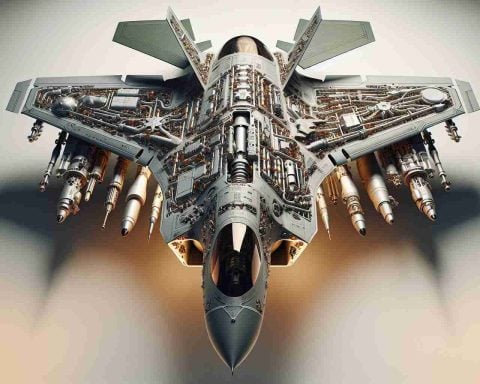Should Ukraine Get More Jets? Why One General Thinks Not Yet!
In an international debate over military aid to Ukraine, Sweden recently expressed its readiness to supply Gripen fighters to the embattled nation. However, this proposal has met with hesitation from an important ally, the Netherlands.
General Onno Eichelsheim, Chief of Defence for the Netherlands, raised strategic concerns about the introduction of additional aircraft systems. He emphasized the risk of overloading Ukraine with diverse fighter jets when pilot availability is limited. This, he believes, could lead to inefficiencies and maintenance issues, diluting the focus needed on already promised aircraft.
In response to strategic deliberations that began back in July, the Netherlands, Denmark, and the United States had committed to donating F-16s to Ukraine. With F-16s now part of Ukraine’s aerial arsenal, Eichelsheim argues against introducing Swedish Gripens and French jets into the mix. He suggested instead that acclimating pilots to operate F-16s should remain the priority.
Swedish Defense Minister Pål Jonson recently disclosed that Sweden had been advised not to proceed with Gripen deliveries until the full integration of F-16s is achieved. The rationale is to prevent the complications of managing multiple high-tech systems concurrently.
While Ukrainian forces demonstrate aptitude with the F-16, stock availability of vital spare parts is crucial to its operational success. Recent changes by the U.S. have allowed American contractors to support Ukraine, potentially easing maintenance challenges.
Amidst these discussions, Dutch officials note the impressive adaptability and rapid learning exhibited by Ukrainian pilots using the new aircraft. As such, consolidating existing resources remains a path deemed most practical for now.
Is Ukraine Ready for More Fighter Jets? Exploring Innovations and Challenges in Modern Warfare
The dynamic landscape of military technology and international defense promises profound impacts on how conflicts are approached globally. As the debate over expanding Ukraine’s aerial capabilities unfolds, many layers of technological and strategic implications emerge, influencing future developments in defense strategies and aircraft technology.
Technological Complexity vs. Combat Efficiency
The primary concern regarding Ukraine’s acquisition of multiple fighter jet types centers around technological complexity. Integrating various aircraft like the F-16s, Swedish Gripens, and potentially others requires significant pilot retraining and logistical support. This situation mirrors historical challenges nations faced when managing technologically diverse fleets—balancing combat capabilities with efficient maintenance and resource allocation is not a new dilemma.
Modern combat scenarios prescribe streamlined operations where interoperability and rapid response are crucial. Thus, Ukraine’s prioritization of mastering the F-16’s roles exemplifies an understanding of such necessities. Questions arise: Should other nations faced with similar situations veer towards standardized fleets for efficiency?
Adaptation and Innovation: Learning from Ukrainian Pilots
Ukrainian pilots have demonstrated remarkable adaptability, a testament to human ingenuity and the ability to quickly assimilate cutting-edge technologies under pressure. Such adaptability holds lessons extendable beyond military applications—spanning sectors where rapid upskilling is essential in adopting emerging technologies.
Could this reframe civilian sectors, like aviation or IT, where rapid tech advancements continuously shift landscapes? Exploring educational frameworks and training programs inspired by military models may unlock new efficiencies across industries.
Socio-Political Implications: Defense vs. Diplomacy
Military aid programs extend beyond simple logistical concerns, carrying socio-political ramifications. While the Netherlands and Sweden discuss fighter jet provisions, these decisions reflect broader defense alliances’ strategic stances, impacting diplomatic ties and national security policies in Europe.
Nations are prompted to consider: How do defense aid dynamics influence geopolitical power balances? Beyond immediate military outcomes, these decisions can alter international relations and regional stabilities, posing threats or presenting opportunities for peace-building initiatives.
Advantages and Risks: A Balanced View
Integrating advanced aviation technology undeniably strengthens Ukraine’s defense posture, enhancing air superiority and strategic operations. However, the risks of fragmented logistics, stretched maintenance capacities, and strategic misalignments must be calculated carefully.
Is there a tipping point where military advancements might render existing systems obsolete faster than they can be effectively utilized?
Moving Forward: Collaborative Defense Strategies
The ongoing discourse emphasizes a future of collaborative defense strategies, blending technical knowledge with diplomatic prudence. As logistical support from allies like the U.S. materializes, could we witness new models of international military cooperation that more effectively integrate diverse technologies?
This evolving narrative is tied intricately with defense technology’s rapid evolution, ushering in strategic changes likewise reflected in global military doctrines.
For more insights into defense technology and global political strategies, consider exploring Defense News and Foreign Affairs.

















